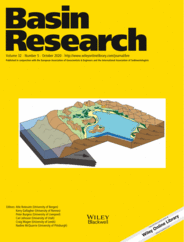
Full text loading...
 , Ethan L. Grossman1
, Ethan L. Grossman1 , Christopher R. Maupin4
, Christopher R. Maupin4
We used clumped isotope thermometry to explore past geothermal gradients for five wells in the Delaware Basin, West Texas, USA. Measured Δ47 temperatures range from 27–307°C, with most temperatures significantly higher than the modern geothermal gradient. We calculated past geothermal gradients using clumped isotope reordering models, revealing a range of past geothermal gradients from 32°C/km in the eastern portions of the basin to 45°C/km in the western portion.
We utilized carbonate clumped isotope thermometry to explore the thermal history of the Delaware Basin, West Texas, USA. Carbonate wellbore cuttings from five oil/gas wells across the basin yielded clumped isotope temperatures (T(Δ47)) ranging from 27°C to 307°C, interpreted to reflect a combination of initial precipitation/recrystallization temperature and solid‐state C‐O bond reordering during burial. Dolomite samples generally record lower apparent T(Δ47)s than calcite, reflecting greater resistance to reordering in dolomite. In all five wells, clumped isotope temperatures exceed modern downhole temperature measurements, indicating higher heat flow in the past. Using modelled burial curves based on sedimentological history, we created unique time‐temperature histories by linearly applying a geothermal gradient. Applying two different thermal history reordering models, we modelled the extent of solid‐state C–O bond reordering to iteratively find the time‐averaged best‐fit geothermal gradients for each of the five wells. Results of this modelling suggest that the shallower, southwestern portion of the study area experienced higher geothermal gradients throughout the sediment history (~45°C/km) than did the deeper, southeastern portion (~32°C/km), with the northern portion experiencing intermediate geothermal gradients (~35–38°C/km). This trend is in agreement with the observed gas/oil ratios of the Delaware Basin, increasing from east to west. Furthermore, our clumped isotope temperatures agree well with previously published vitrinite reflectance data, confirming previous observations and demonstrating the utility of carbonate clumped isotope thermometry to reconstruct basin thermal histories.
]
Article metrics loading...

Full text loading...
References


Data & Media loading...

